Cutting wood with a circular saw feels amazing. The first time I used one, I was nervous. But once I made my first cut, I wished I had learned sooner. If you’re wondering how to use a circular saw, you’re in the right place. I’ll break it down step by step so you feel safe and confident. Let’s get started!
Understanding a Circular Saw
What Is a Circular Saw?
A circular saw is a power tool with a fast-spinning round blade. It cuts wood, metal, and plastic with ease. If you’ve ever struggled with a hand saw, this tool is a game-changer. It makes straight cuts in seconds with little effort.
Quick Answer: A circular saw is a handheld tool with a spinning blade that makes fast, straight cuts in wood, metal, and plastic.
Circular Saw vs. Skill Saw – What’s the Difference?
Ever heard someone say “skill saw” instead of “circular saw”? It’s a common mix-up! Skil Saw is actually a brand name. It became so popular that people started using it for all circular saws—kind of like calling all tissues “Kleenex.”
So, if you’re wondering how to cut with a skill saw, the answer is simple. The cutting process is the same as using any circular saw.
Quick Answer: A Skil Saw is a brand of circular saw, but the terms are often used interchangeably. The cutting method is the same.
Corded vs. Cordless Circular Saws – Which One Should You Get?
Both types have pros and cons. Corded circular saws have unlimited power and work well for big projects. Cordless saws run on batteries, making them great for jobs where you need to move around.
If you work in a shop, a corded saw gives you steady power. If you need to cut in different places, a cordless saw offers more freedom.
Quick Answer: Corded saws offer non-stop power. Cordless saws give you mobility but need battery charging.
Stay Safe Before You Cut
Before using a circular saw, take a moment to prepare. A few simple steps will keep you safe and make cutting easier.
Wear Safety Gear
Power tools can be loud and messy. Protect yourself with:
✅ Safety glasses – Keep dust and wood chips out of your eyes.
✅ Ear protection – Reduce noise with earplugs or earmuffs.
✅ Gloves (optional) – Help with grip but must fit snugly.
Quick Tip: Always wear safety glasses and ear protection.
Set Up Your Work Area
A clean, stable workspace prevents accidents. Before cutting:
✅ Clear clutter – Remove anything that could get in the way.
✅ Use a sturdy surface – Workbenches or sawhorses keep wood steady.
✅ Check cords – Keep them away from the blade.
Quick Tip: A stable workspace helps you cut safely and accurately.
Prevent Kickback – The Biggest Danger
Kickback happens when the saw binds and jerks back. To stop it:
✅ Hold the saw tight – Keep both hands on it.
✅ Support the wood – Never cut wood that isn’t secured.
✅ Use a sharp blade – Dull blades cause kickback.
Quick Tip: Stop kickback by securing wood and using a sharp blade.
How to Use a Circular Saw (Step-by-Step Guide)
A circular saw may look tough to use, but it’s simple! Once you learn the basics, cutting wood feels natural. Follow these steps to cut like a pro.
Step 1: Pick the Right Blade
Different blades do different jobs. Some make smooth cuts. Others cut fast but rough.
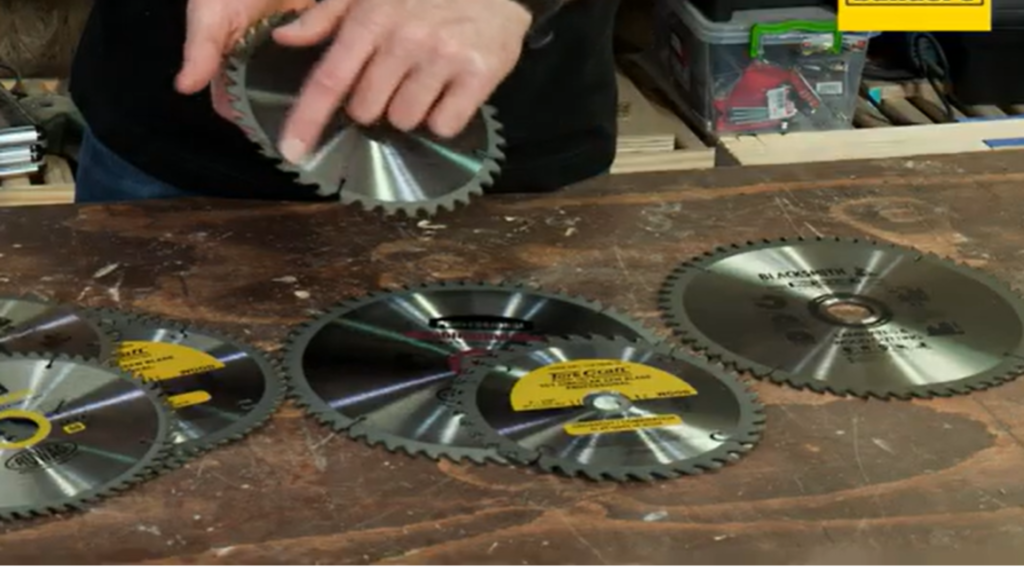
✅ Fine-tooth blades – Give clean, splinter-free cuts.
✅ Rough-cut blades – Cut fast but leave rough edges.
✅ Wood vs. metal blades – Wood blades have big teeth. Metal blades have tiny teeth for slow, smooth cuts.
Quick Tip: Want clean cuts? Use a fine-tooth blade. Need speed? Pick a rough-cut blade.
Step 2: Set the Cutting Depth and Angle
Setting the blade right helps you cut better. If it’s too deep, the saw may kick back.
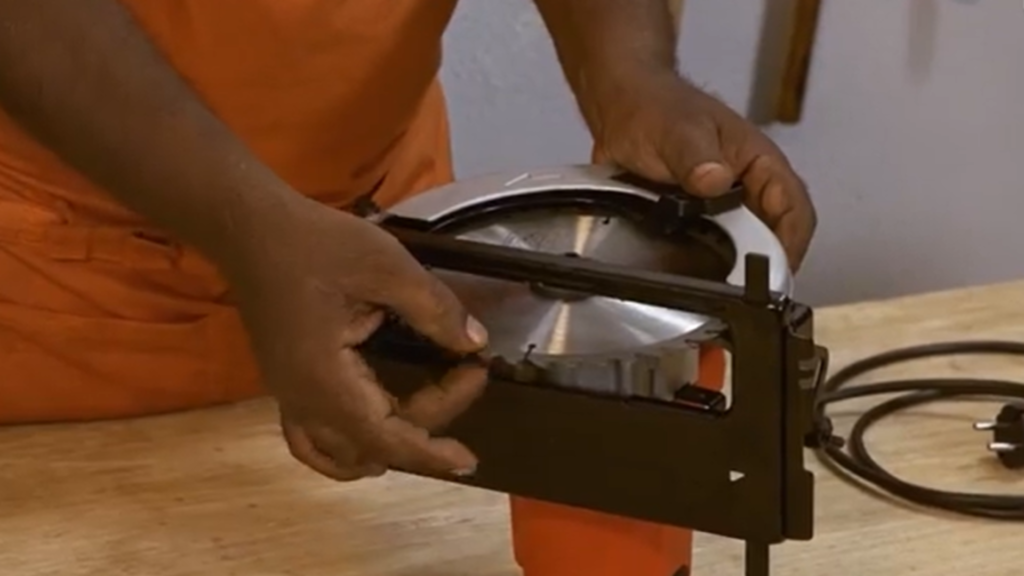
How to Set Depth:
Unplug the saw or remove the battery.
Adjust the blade 1/4 inch deeper than your wood.
Lock it in place.
How to Adjust the Bevel Angle:
Find the angle knob.
Set it between 0° and 45°, depending on your cut.
Tighten it before cutting.
Quick Tip: Keep the blade just 1/4 inch deeper than the wood for the best cut.
Step 3: Mark Your Cut Line
A good guide helps you cut straight. Try these:
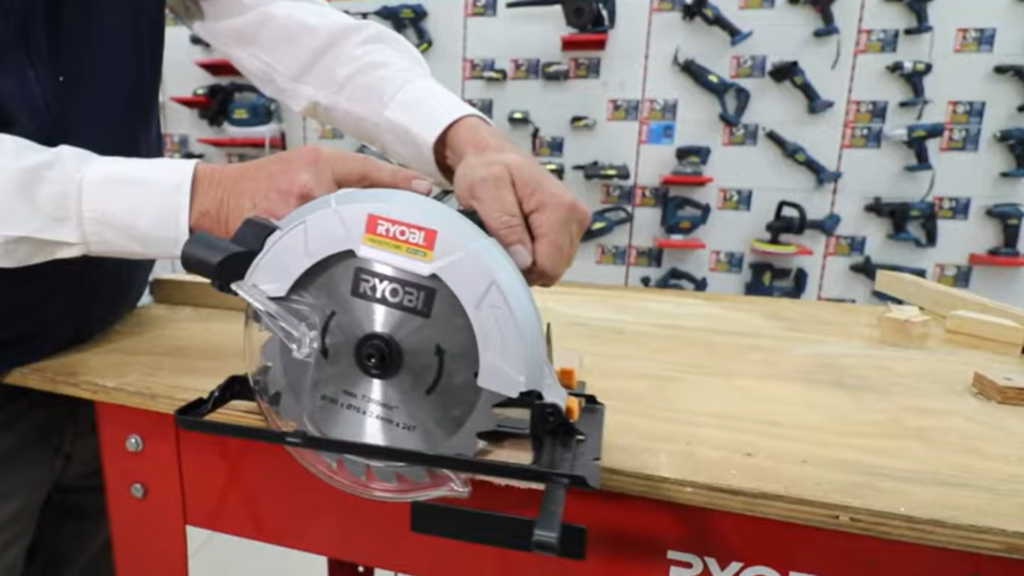
✅ Speed square – Perfect for straight, 90-degree cuts.
✅ Chalk line – Great for long, straight cuts.
✅ Painter’s tape – Stops plywood from splintering.
Quick Tip: Use a speed square for accuracy. Tape helps prevent splinters.
Step 4: Make the Cut
Now, it’s time to cut! Follow these steps:
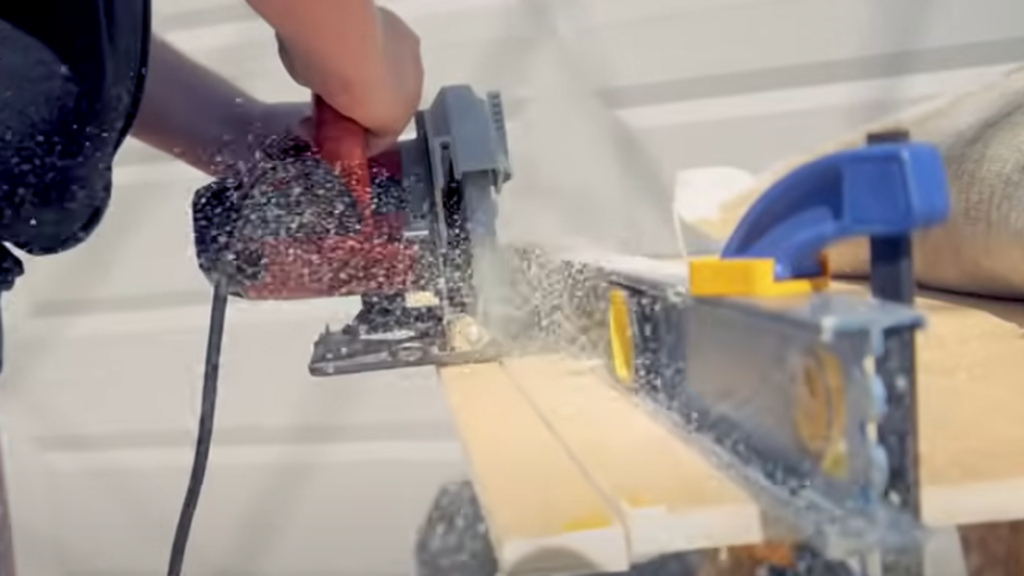
Hold the saw tight – Use both hands.
Line up the blade – Match it to your mark.
Let it reach full speed – Don’t push too hard.
Move smoothly – Let the saw do the work.
Pro Tips for a Cleaner Cut:
✅ Use a guide rail for straight cuts.
✅ Keep the saw flat to avoid rough edges.
✅ If the saw slows down, stop and check the wood.
Quick Tip: Let the saw reach full speed before cutting. A guide rail helps with straight cuts.
Advanced Cutting Techniques
Now that you’ve got the basics down, let’s level up! Whether you’re framing, making precise cuts, or trying plunge cuts, these tips will help you get clean, accurate results.
How to Cut with a Skill Saw for Framing and Precision Cuts
Framing is all about speed and accuracy. A circular saw (often called a skill saw) makes quick, straight cuts, but control is key!
✅ For framing: Use a 24-tooth blade for fast, rough cuts. Hold the saw steady, let the blade do the work, and move smoothly.
✅ For clean cuts: Use a 40-tooth (or higher) fine blade for smoother edges.
✅ Pro Tip: Need identical boards? Stack them and cut at the same time to save effort and keep them even.
Quick Answer: Use a rough blade for framing and a fine blade for smooth cuts. Stack boards to cut faster and more accurately.
Crosscuts vs. Rip Cuts: What’s the Difference?
Not sure if you need a crosscut or a rip cut? Here’s a simple breakdown:
✅ Crosscuts go across the wood grain (like cutting a 2×4 in half). A speed square helps guide the saw for accuracy.
✅ Rip cuts go along the grain for long, straight cuts. A guide rail keeps the cut straight.
Which is harder? Rip cuts. The saw may drift, so a guide rail helps keep it on track.
Quick Answer: Crosscuts go across the grain (use a speed square). Rip cuts go with the grain (use a guide rail).
How to Make Plunge Cuts with a Circular Saw
A plunge cut starts in the middle of the wood instead of the edge. This is useful for making openings in floors, countertops, or panels.
How to do it safely:
Mark your cut line to guide your saw.
Tilt the saw forward so the blade isn’t touching the wood yet.
Turn on the saw and slowly lower the blade into the wood.
Once inside, push forward along the cut line.
🚨 Safety Tip: Always keep both hands on the saw and wear safety glasses—plunge cuts create a lot of dust!
Quick Answer: Tilt the saw, turn it on, lower the blade into the wood, then cut forward.
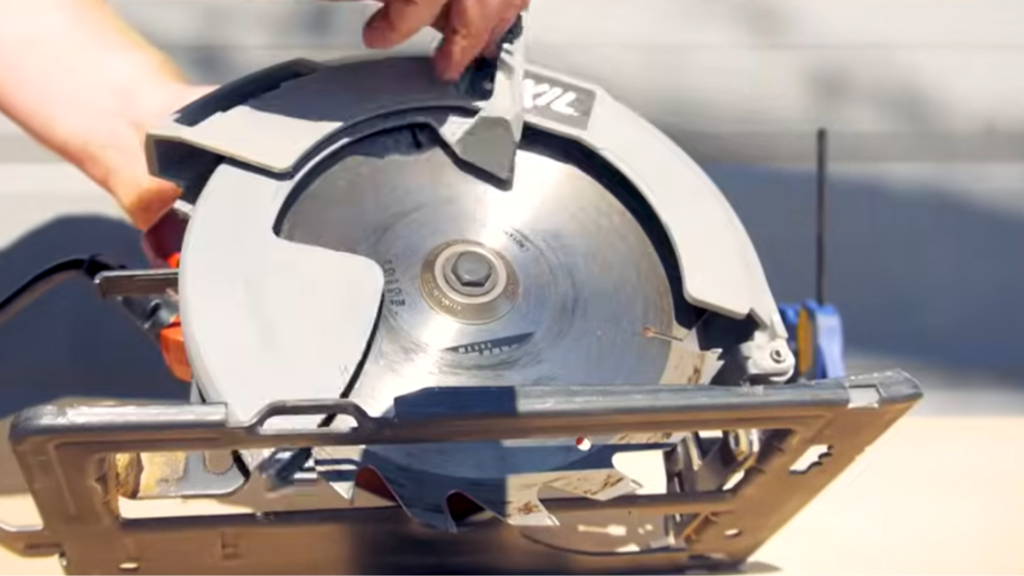
Circular Saw Maintenance & Troubleshooting
Taking care of your circular saw keeps it running smoothly and helps it last longer. A little maintenance goes a long way!
Clean the Blade to Keep It Sharp
Dust, resin, and gunk build up on the blade over time. A dirty blade cuts poorly and can make the saw work harder than it should.
How to clean your blade:
Unplug the saw or remove the battery.
Take off the blade (use the blade lock button and wrench).
Soak it in warm, soapy water for 10 minutes.
Scrub off the gunk with a brass brush.
Dry it well and apply a little WD-40 or blade cleaner to stop rust.
Quick Tip: A clean blade cuts faster and lasts longer.
Stop Blade Wobbling & Fix Overheating
If your blade wobbles, your cuts won’t be straight. Overheating can also damage your saw. Here’s how to fix both:
✅ Blade wobbling? Tighten the arbor bolt and check if the blade is dull or bent. Replace it if needed.
✅ Motor overheating? Let the saw rest between cuts. Blow out dust from the vents with compressed air.
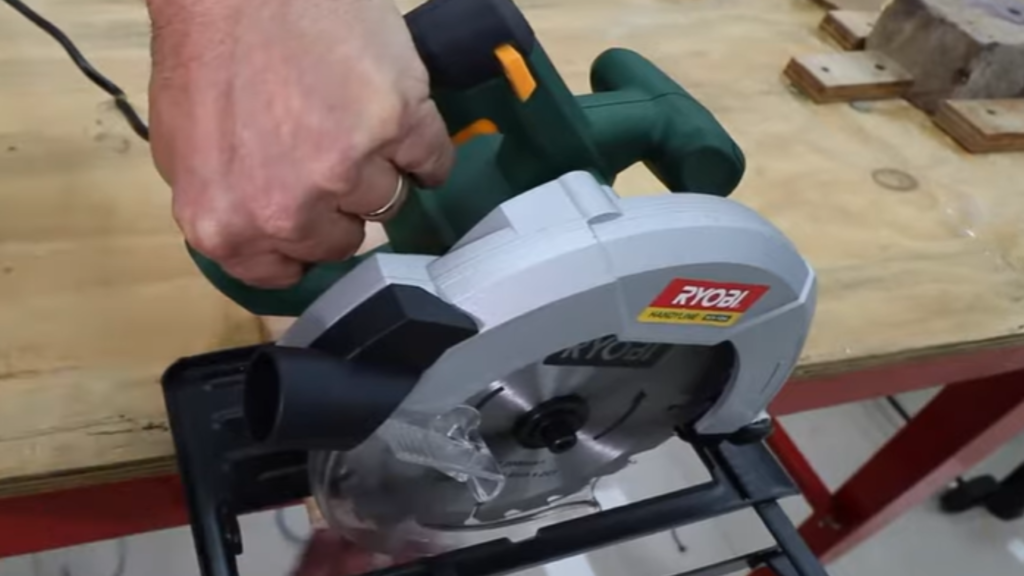
FAQs (Simple Answers to Common Questions)
Got questions? No worries! Here are quick and easy answers to help you out.
What’s the Best Circular Saw for Beginners?
If you’re new to cutting, pick a corded circular saw. It gives steady power and is easy to control. A great choice is the DEWALT 7-1/4” Circular Saw. If you prefer cordless, try the Makita 18V LXT—light and portable.
✅ Quick Answer: A corded saw like the DEWALT 7-1/4” is best for beginners. Need cordless? Try the Makita 18V LXT.
How Do I Stop a Circular Saw from Binding?
Binding happens when the blade gets stuck. To prevent it:
✔ Support the wood well—never let the cut-off piece hang loose.
✔ Use a sharp blade—dull blades can grab and stall.
✔ Cut straight—guide the saw smoothly without pushing too hard.
✅ Quick Answer: Support the wood, use a sharp blade, and guide the saw smoothly to prevent binding.
How Deep Should I Set the Blade?
A simple rule: Set the blade 1/4 inch deeper than the material for clean cuts.
Plywood & softwood: 1/4 inch deeper works best.
Conclusion
Using a circular saw may seem tricky at first, but it’s easier than you think. With a little practice, you’ll feel confident in no time!
✅ Quick Recap: Wear safety gear, set the blade depth right, and let the saw do the work. Hold it steady, follow your line, and avoid kickback.
Start with scrap wood to get comfortable. Once you get the hang of it, cutting will feel natural.
Have questions? Drop them in the comments—I’m happy to help!

